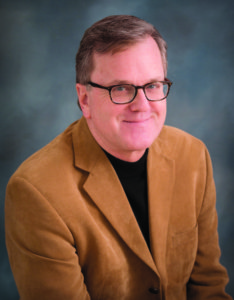
Recently the Oregon Legislature held a hearing on HB 3231, a bill promoted by Rep. Rich Vial (R-Scholls) that would authorize the formation of special districts for the purpose of constructing and operating limited-access highways.
Opponents made many of the same arguments they’ve been using for decades: new highways threaten farmland; increased driving will undermine Oregon’s “climate change” goals; and we can’t “build our way out of congestion.”
Perhaps the most comical opposition argument was made by Marion County, which sent all three of its Commissioners in a show of force. The Commission Chair concluded his remarks by saying, “We understand progress; we just want that progress to go somewhere else.”
Oregon stopped building new highways in 1983 after I-205 was completed. Elected officials came to believe that our needs for mobility could be met through increased urban densities, massive subsidies for public transit, and various forms of “demand management” to entice or even force people out of their cars.
The new approach didn’t work.
It turns out that manipulating urban form through land-use controls has very little influence on driving. Sure, you can regulate suburbia out of existence through density mandates, as Metro is doing. You can also reduce the parking supply and bring light rail right to someone’s front door.
But no matter how much some people fantasize about using alternatives to cars, it’s not very practical. Midday meetings, post-work errands, childcare obligations, and countless other demands lead people to rationally opt for driving for most trips.
That’s why, after a 20-year spending binge of $3.67 billion for new rail lines, TriMet’s share of daily commuting in Portland actually dropped from 12% in 1997 to 10% in 2016.
Auto-mobility is a wonderful thing, and there is no reason to feel guilty about new roads. For one thing, driving is strongly associated with economic growth. According to ODOT, for every job created in Oregon, we can expect an additional 15,500 miles of auto travel each year. If you’re in favor of new job creation, you have to accept increased driving as a logical consequence.
Moreover, the emissions associated with driving are now so minor that the real concern should be reducing air pollution from congestion. Vehicles sitting in gridlock have per-mile emissions of infinity; getting those vehicles into free-flowing conditions will improve local air quality.
Autos generally have the lowest emission rates when traveling at steady speeds of around 50 MPH. This is also a driving speed that makes most drivers happy, especially at rush hour. The way to accomplish both goals is through the construction of new highways when needed, coupled with the use of variable toll rates (also known as “dynamic pricing”). This could happen under HB 3231.
Across the country, dozens of impressive new highways are being built, many with private financing. Dynamic pricing is being be used to pay off bonds and eliminate congestion. This is the progress that most commuters dream about.
Unfortunately, it probably won’t happen here. Oregon politicians only support progress somewhere else.
John A. Charles, Jr. is President and CEO of Cascade Policy Institute, Oregon’s free market public policy research organization. A version of this article originally appeared in the Portland Tribune on April 25, 2017.
(Unless otherwise noted, the opinions expressed are the author’s and do not necessarily reflect the views of the Northwest Connection.)
No Comments
Leave a comment Cancel